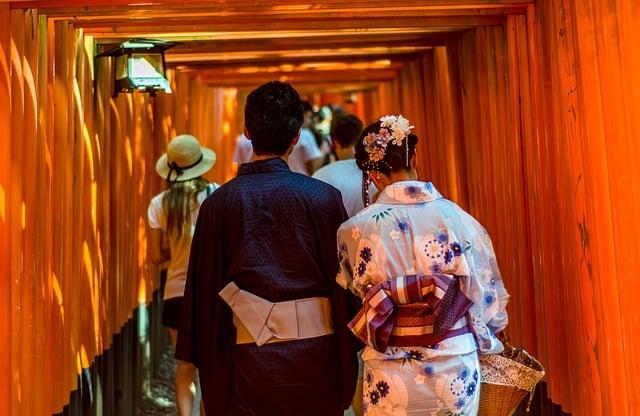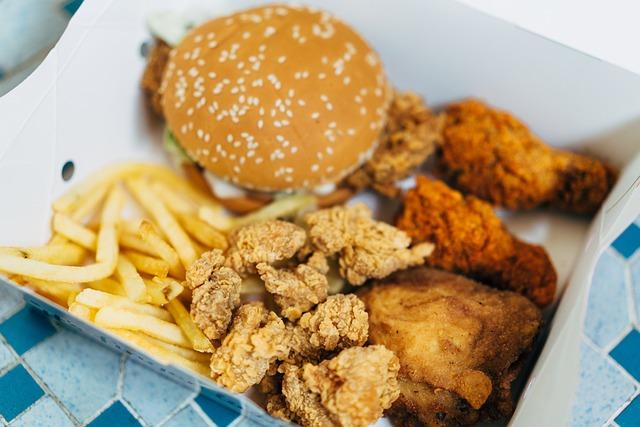In the 1970s, KFC faced a challenge in Japan: how to introduce fried chicken to a nation that traditionally celebrated Christmas with cake. A clever marketing team seized the opportunity, positioning KFC as the ultimate holiday feast. They launched a campaign featuring Colonel Sanders in a Santa suit, and soon, families began to flock to KFC for their Christmas dinners. The unique blend of Western culture and local tradition took off, turning KFC into a festive staple. Today, the aroma of fried chicken wafts through the air, a delicious symbol of celebration in Japan.
Table of Contents
- Cultural Fusion: The Unique Appeal of KFC in Japanese Society
- Festive Feasts: KFC as a Holiday Tradition in Japan
- Marketing Mastery: How KFC Captured the Japanese Market
- Menu Innovations: Tailoring Flavors to Local Tastes
- Q&A

Cultural Fusion: The Unique Appeal of KFC in Japanese Society
The phenomenon of KFC in Japan is a fascinating example of cultural fusion, where Western fast food meets traditional Japanese customs. The brand has successfully integrated itself into the fabric of Japanese society, particularly during the festive season. **Christmas in Japan** has taken on a unique flavor, with KFC becoming a staple for holiday celebrations. Families often reserve their buckets of fried chicken weeks in advance, turning a simple meal into a cherished tradition. This practice highlights how KFC has transcended its origins, becoming synonymous with joy and togetherness during a time typically reserved for family gatherings.
Moreover, KFC’s menu in Japan reflects a blend of local tastes and global influences, further enhancing its appeal. The introduction of items such as **teriyaki chicken**, **wasabi-flavored fries**, and **Japanese-style rice bowls** showcases the brand’s adaptability and willingness to embrace local culinary preferences. This fusion not only attracts a diverse customer base but also fosters a sense of pride among Japanese consumers, who appreciate the unique offerings that cater to their palates. By marrying traditional Japanese flavors with the iconic KFC experience, the brand has carved out a niche that resonates deeply within the culture, making it a beloved choice for many.

Festive Feasts: KFC as a Holiday Tradition in Japan
In Japan, the holiday season takes on a unique flavor, with KFC emerging as a beloved culinary tradition. Each year, families and friends gather to celebrate Christmas with a feast centered around the iconic fried chicken. This phenomenon can be traced back to a successful marketing campaign in the 1970s, which positioned KFC as a festive meal option for those who wanted to enjoy a special dinner without the hassle of cooking. As a result, the idea of indulging in a bucket of crispy chicken has become synonymous with holiday celebrations, transforming KFC into a staple on Christmas tables across the nation.
The allure of KFC during the festive season is not just about the food; it’s also about the experience. Many customers eagerly place their orders weeks in advance, often opting for special holiday packages that include sides like coleslaw and mashed potatoes, along with the signature chicken. The excitement surrounding these meals has led to a cultural phenomenon where families create their own traditions around the KFC feast. Some key elements that contribute to this festive spirit include:
- Limited-time offerings: Seasonal menu items that add a unique twist to the classic meal.
- Family bonding: Sharing a bucket of chicken fosters togetherness and joy during the holidays.
- Convenience: The ease of ordering and enjoying a meal without the stress of preparation.

Marketing Mastery: How KFC Captured the Japanese Market
KFC’s success in Japan can be attributed to a unique blend of cultural adaptation and strategic marketing. When the fast-food giant first entered the Japanese market in 1970, it recognized the importance of localizing its offerings. Instead of merely replicating its American menu, KFC introduced items that resonated with Japanese tastes, such as the Teriyaki Chicken and Japanese-style fried chicken. This approach not only appealed to local palates but also positioned KFC as a brand that respects and embraces Japanese culinary traditions.
Moreover, KFC’s marketing campaigns have played a pivotal role in solidifying its presence in Japan. The company cleverly capitalized on the Christmas season, promoting its fried chicken as a festive meal, which has now become a beloved tradition for many Japanese families. This innovative strategy transformed KFC into a symbol of celebration, leading to long lines and pre-orders during the holiday season. Additionally, the brand’s use of engaging advertisements featuring Colonel Sanders, often dressed in traditional Japanese attire, has further endeared the brand to consumers, creating a unique cultural connection that few foreign brands have achieved.

Menu Innovations: Tailoring Flavors to Local Tastes
KFC’s success in Japan can be largely attributed to its ability to adapt its menu to resonate with local culinary preferences. The introduction of unique offerings such as the Teriyaki Chicken and Japanese-style fried chicken has allowed the brand to create a distinct identity that appeals to Japanese consumers. These innovations not only cater to local tastes but also incorporate familiar flavors that enhance the overall dining experience. Seasonal items, like the Christmas Chicken, have become a cultural phenomenon, transforming KFC into a festive staple during the holiday season.
Moreover, KFC’s commitment to quality and presentation aligns with Japanese dining culture, where aesthetics play a crucial role. The brand has embraced local ingredients, ensuring that its offerings are not only delicious but also reflect the freshness and quality that Japanese consumers expect. By incorporating elements such as matcha-flavored desserts and spicy sauces, KFC has successfully created a menu that feels both innovative and familiar. This strategic approach to menu development has solidified KFC’s position as a beloved fast-food option in Japan, demonstrating the power of localization in global branding.
Q&A
-
What is the history behind KFC’s popularity in Japan?
KFC’s rise in Japan began in 1970 when it was introduced as a festive meal option. The marketing campaign positioned fried chicken as a traditional Christmas dinner, leading to a unique cultural association that persists today.
-
How does KFC cater to Japanese tastes?
KFC Japan offers a variety of menu items tailored to local preferences, including unique flavors and seasonal offerings. This adaptability has helped the brand resonate with Japanese consumers.
-
What role does marketing play in KFC’s success in Japan?
KFC employs innovative marketing strategies, including limited-time promotions and collaborations with popular culture. Their clever advertising campaigns create excitement and drive sales, especially during the holiday season.
-
Why do people in Japan associate KFC with Christmas?
The association stems from a successful marketing campaign in the 1970s that promoted KFC as a Christmas meal. This idea caught on, and now many Japanese families enjoy KFC as part of their holiday traditions.
KFC’s success in Japan is a blend of cultural adaptation, strategic marketing, and festive traditions. As the Colonel’s secret recipe continues to delight taste buds, it’s clear that this iconic brand has truly become a part of Japan’s culinary landscape.




